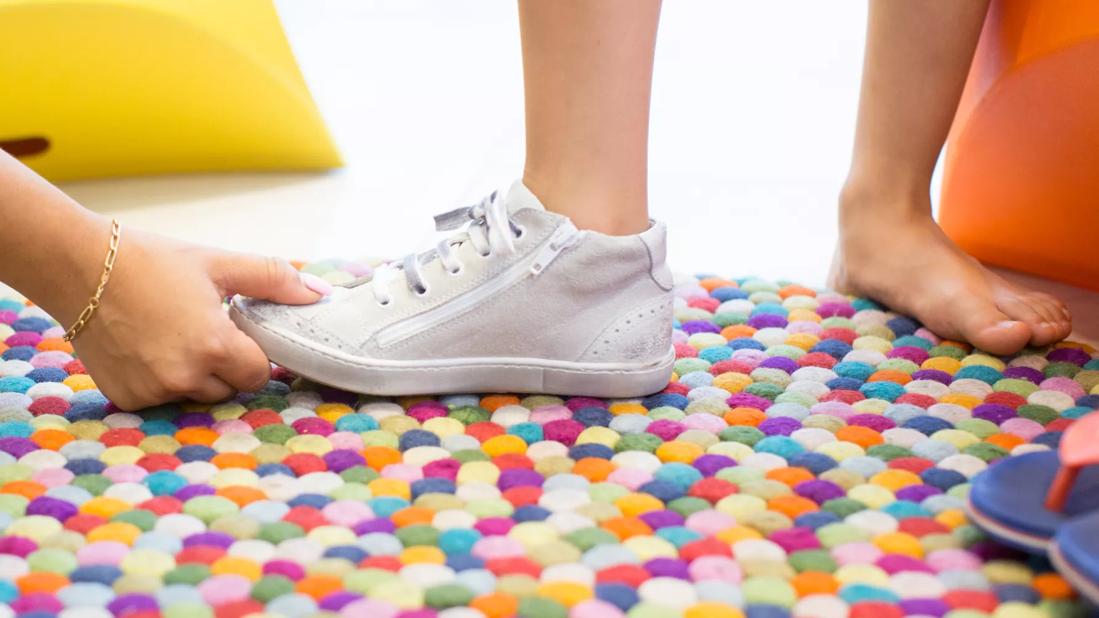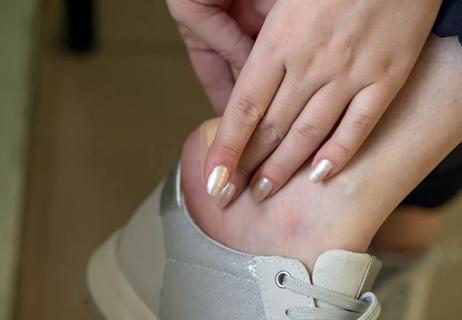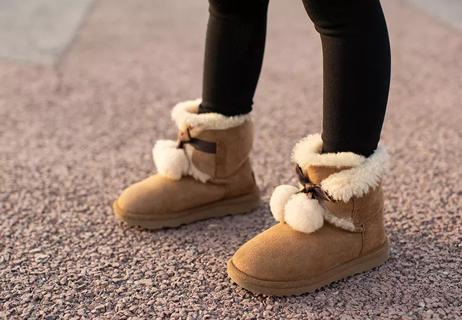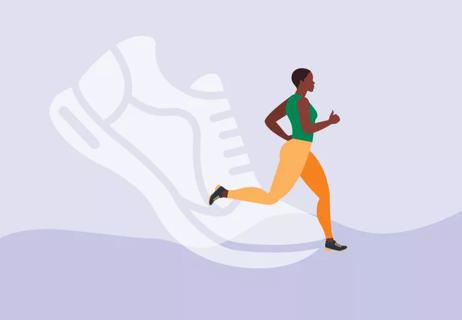Choose fit and function over fashion

When you go shopping for your kids, are you overwhelmed by shoe choices? It’s tempting to go for the most adorable pair, but choosing the best shoe for your little boy or girl depends on more on fit and function than on fashion. Making the effort to get a good fit now helps develop their healthy feet for life.
Advertisement
Cleveland Clinic is a non-profit academic medical center. Advertising on our site helps support our mission. We do not endorse non-Cleveland Clinic products or services. Policy
“A child’s foot can continue to grow until about age 18,” says foot and ankle surgeon Nicole Nicolosi, DPM. “That’s why proper shoe fit and function are so vital to your kid’s foot health and development.”
In the short term, shoes that don’t fit correctly can create foot pain for your little one, along with calluses, corns, ingrown toenails or blisters.
In the long term, more serious issues like foot and toe deformities can develop. If your child wears ill-fitting shoes throughout his or her developmental years — especially before age 5 — it can also lead to other long-term problems with posture or walking — or it can even cause back pain later in life.
In fact, many foot problems in adulthood begin with ill-fitting shoes or poor foot experiences during childhood, Dr. Nicolosi says.
She offers five tips to help you walk away with the best pair:
Have your child’s feet measured in a shoe store instead of trying to do it yourself at home. A store associate will have the best equipment to find the correct length and width for your child’s feet.
Additional tip: It’s best to have your little one stand and put a bit of weight on each foot, which elongates it for a more accurate measurement.
Advertisement
One of the most common issues Dr. Nicolosi sees is parents buying shoes that are too big for their children. This is especially worrisome for infants and toddlers who are just learning to walk and are often wobbly on their feet, she says.
“Parents often buy bigger shoes thinking their children will grow into them and they’ll last longer,” she says. “But the reality is that shoes a half or whole size too large leave your child vulnerable to trips and falls that could lead to injury.”
Adequate width and depth in the front of the shoe, or toe box, help prevent overcrowding or increased pressure on the toes. Make sure your child can easily move the front of the foot in his or her shoes and wiggle toes freely — without any slippage or squished toes.
Allow between 1 and 2 centimeters (or about a thumb’s width) from the longest toe to the front of the shoe. More than 3 cm is too big; less than 1 cm is too small, Dr. Nicolosi says.
Children are usually energetic and enjoy sports and other physical activities, so it’s best to choose closed-toe athletic shoes with arch support, Dr. Nicolosi says.
Rubber soles are also great for kids because they have increased slip resistance and help reduce the risk of falls. Hard soles allow for better support, while a shoe that you can freely bend back and forth (soft sole) offers very little support and control of foot motion, she says.
The American Orthopaedic Foot and Ankle Society also suggests buying shoes made with breathable materials such as leather, canvas or mesh. Children’s feet tend to sweat more than adults’ feet. These materials can help with air flow.
If your child is in his growing years, you may need to check and replace shoes as often as every three or four months, Dr. Nicolosi says.
Kids’ feet often grow about a half size in that time, and they need plenty of room to allow their feet to grow properly, she says.
Take the time to measure and fit shoes properly and choose styles that offer good support, and you’ll get your kids off on the right foot for life.
Advertisement
Learn more about our editorial process.
Advertisement

Look for good cushioning, sturdy arch support and quality material

Leaving footwear on invites germs, bacteria, toxins and other unwanted guests into your home

If they don’t fit well in the store, they won’t fit any better at home

One thing is for sure: This footwear definitely kicks up controversy

The years can literally reshape your feet

Dulling feeling in your feet could cause problems

The lack of arch support in the popular footwear can lead to numerous aches and pains

Tips for finding your perfect running shoe

The ‘sunshine vitamin’ is found naturally in some fish and is added to other foods

Autism and ADHD often go hand in hand, giving rise to the term AuDHD

The Yuzpe regimen is less effective than other forms of emergency contraceptives, and it’s associated with more side effects